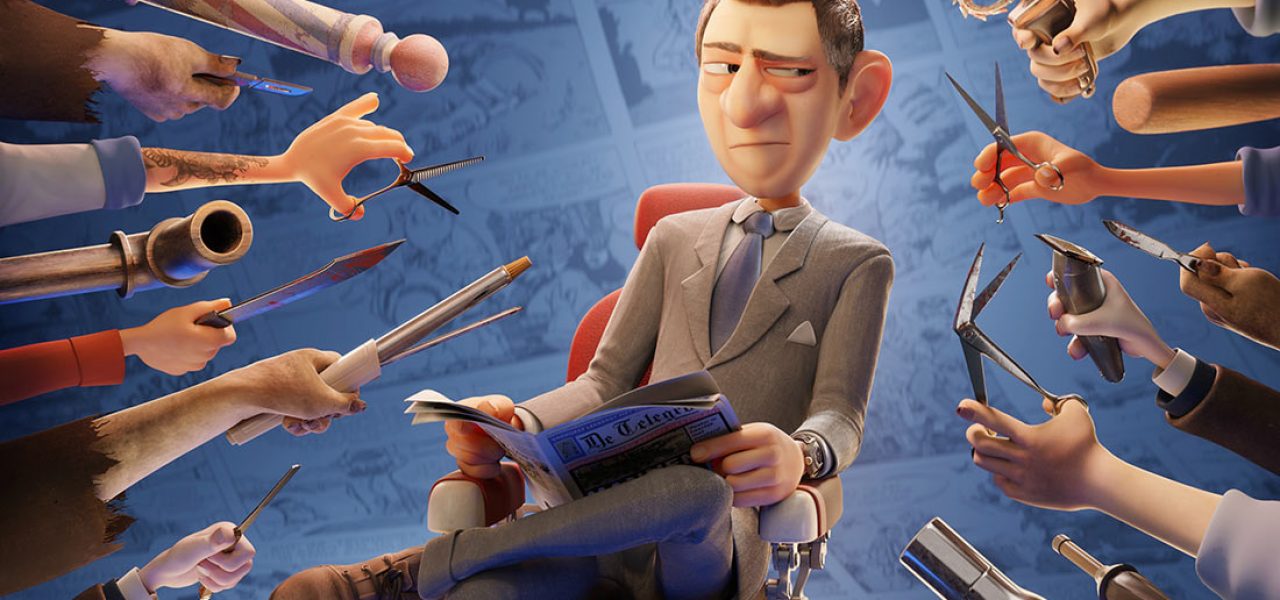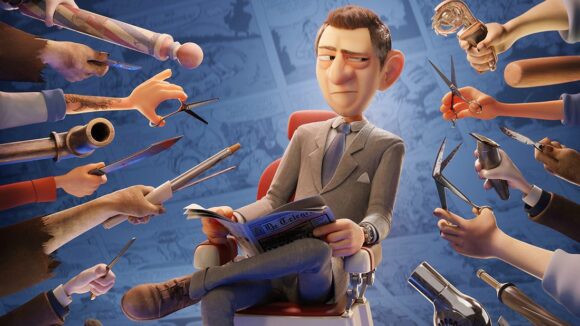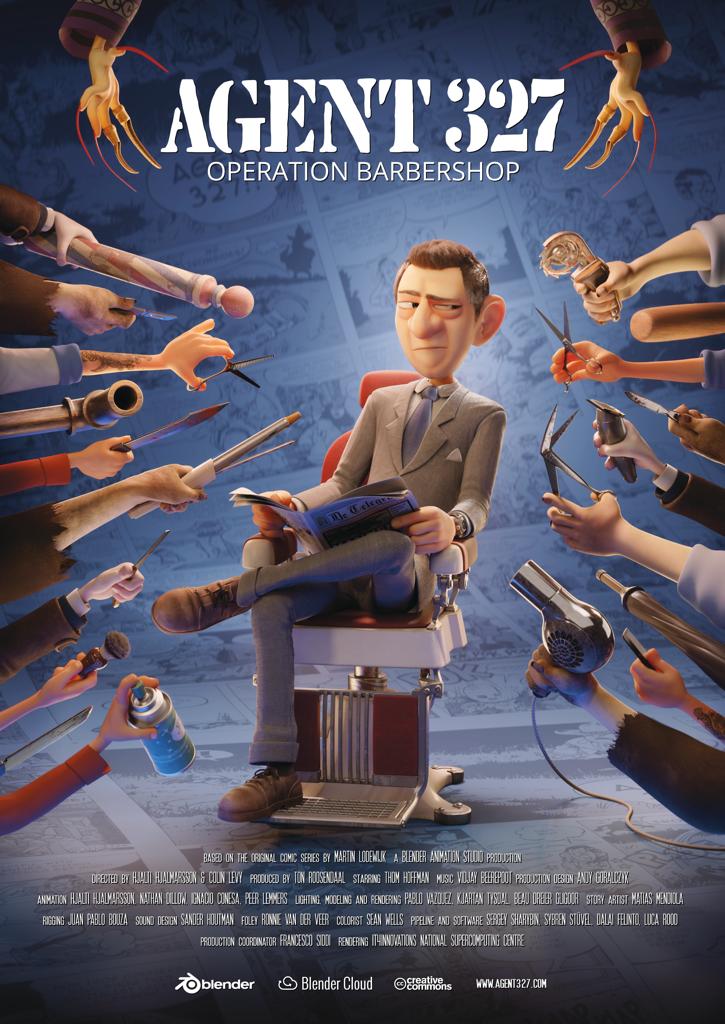

‘Agent 327: Operation Barbershop’ Trailer: How Blender Was Used To Pull Off Hollywood-Level Animation
The Blender Institute has unveiled its newest project showing off the capabilities of its open source Blender 3D and animation toolset. The project is a character study based on Martin Lodewijk’s beloved Dutch comic series Agent 327 and is intended to become a feature film project.
Called Operation Barbershop, the animation test sees Agent 327’s adversary ambush him while he is searching for clues, which turns into a comical fight scene. The work was done almost completely inside Blender, taking advantage of the software’s continual community development, and followed a typical Hollywood production process.
Cartoon Brew spoke to Ton Roosendaal, chairman of the Blender Foundation and director of the Blender Institute, about achieving the high quality of Operation Barbershop and about the road ahead for the planned feature.
The role of Blender
Blender is of course an extremely popular tool, but it’s not always considered a go-to tool for Hollywood-level productions. This Operation Barbershop short is aimed at proving the software is capable of handling feature-quality work.
“Blender has been ready for Hollywood-quality for years,” Roosendaal told Cartoon Brew. “As we all know, it mostly depends on the creative powers you can unleash on it. Put really good people together and you are ready to go. The recent news about Barnstorm VFX using Blender for The Man in the High Castle is a good example for that. It’s a carefully crafted marketing delusion to think that proprietary tools like Maya will turn you into a great artist.”

“On the other hand,” added Roosendaal, “our work on Blender is never done. We know its strengths and its weaknesses. The massive Blender 2.8 ‘Workflow’ project is meant to solve quite some of these, especially by upgrading the viewport to render realtime PBR (physically based rendering), and allowing you to configure Blender to match individual workflows better – including better integration of Blender in a mixed production pipeline.”
In a post on the Blender Cloud site in April 2016 announcing the project, Roosendaal also set out the intentions of the animation test. “From a (technical) Blender point of view, this work will give us nice new challenges. We’ll have to bring cartoony but convincing characters alive, made in a style somewhere inside the triangle Big Hero 6, How to Train Your Dragon and Despicable Me. We will use Blenrig extensively, the new dependency graph, OpenSubdiv, the new widgets, (a bit of) cloth sim, and we will align with the recode of mesh display and modifiers, to make it ready for the first generation of ‘everything’ nodes.”

Road to a feature
Before any production took place in Blender, Roosendaal first looked for a suitable theme or story to adapt to a feature film. He figured the Agent 327 series, already hugely popular in Holland, would appeal to international audiences. But he was also aware that launching into a feature project would require significant story development and funding. So, to begin with, the Agent 327 project was imagined simply as a test. This would be funded directly via the Institute’s income from its Blender Cloud service.
“That’s what we know how to do best,” said Roosendaal of the decision to do a test. “We also want to research and explore how to handle this comic and how to bring it to the screen as an animation movie.”

Animation director Hjalti Hjalmarsson pitched an idea for the comical fight scene in Operation Barbershop. Initial storyboards were supplemented with others from storyboard artist Matias Mendiola who used Blender’s Grease Pencil 2d animation. Pixar alumnus Colin Levy also came on board as co-director with Hjalmarsson. Most of the production was handled out of Blender’s studio in Amsterdam, with remote contributions in the areas of storyboarding, rigging, sound, and grading.
Animating Agent 327
Artists completed Operation Barbershop inside Blender, with some work done in digital painting software Krita and other tools. To help speed up production, Blender’s software team worked to optimize rendering of motion blur in Cycles (Blender’s rendering engine) and to deliver efficient cloth simulation times.

“Meanwhile,” said Roosendaal, “two people in the studio worked on our shot and task management software [named Attract], and on a very sophisticated render manager. These work entirely in Blender Cloud, which is perfect for remote work and collaboration. These features will become available for Cloud subscribers in the coming months. And of course, the software is on blender.org’s Git server for everyone.”
Roosendaal says the animation test is just the beginning. The team has signed with an unnamed Hollywood agent for representation and is talking right now to investors, sales agencies, and possible co-production partners. “We expect that the Operation Barbershop release will help us get connected even better, and we look forward to discuss agreements to further develop and produce the movie,” Roosendaal said.
You can follow the progress of the Agent 327 project at www.agent327.com.


.png)